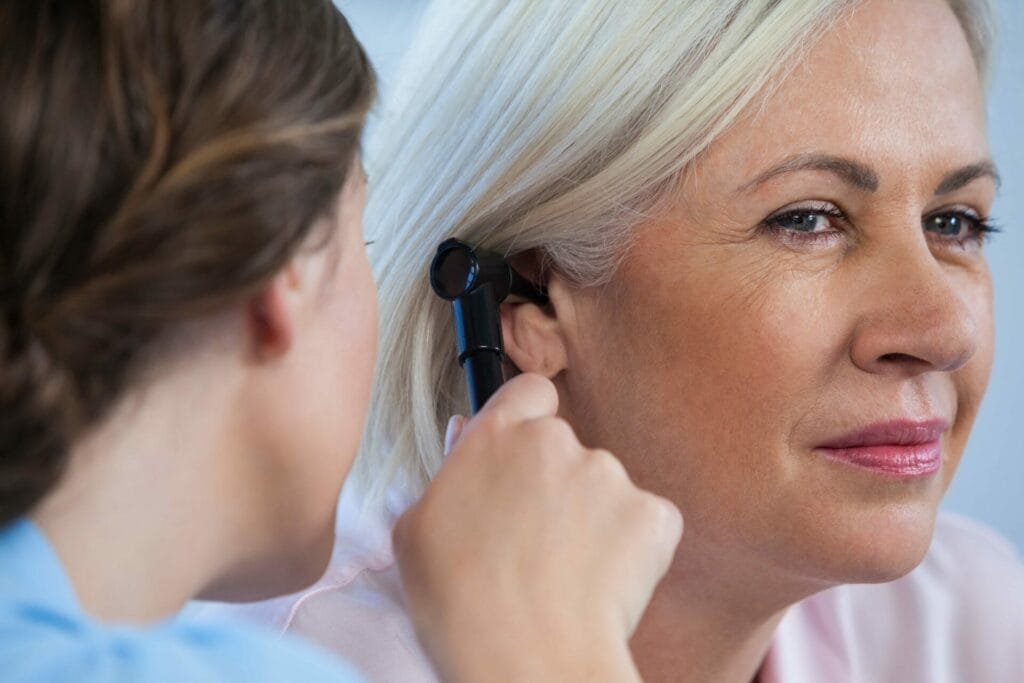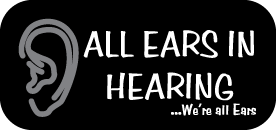Table of Contents
What is Sensorineural Hearing Loss?

Definition of Sensorineural Hearing Loss
Sensorineural hearing loss (SNHL) is a type of permanent hearing impairment that affects one or both ears. It is caused by damage to the inner ear or auditory nerve, and can make it difficult for a person to properly hear high-frequency sounds. In some cases, SNHL may even lead to complete hearing loss.
SNHL can occur in people of any age but is more common among older adults due to the natural aging process of the ear. Other causes include trauma, genetics, certain medications, infections, and exposure to loud noise over time.
Diagnosis usually involves comprehensive audiological testing and imaging studies such as magnetic resonance imaging (MRI) or computed tomography (CT). Treatment options depend on the severity of the condition and may include hearing aids, assistive listening devices, cochlear implant surgery or medication if the cause is an infection or inflammation. Learning sign language may also be beneficial for those with severe SNHL.
While management strategies can help improve a person’s ability to hear and understand sounds better, living with SNHL often comes with emotional challenges such as feeling isolated from others in social situations or difficulty recognising voices. If you think you are experiencing SNHL symptoms, speaking with an audiologist can help determine if treatment is necessary.
Causes of Sensorineural Hearing Loss
The cause of sensorineural hearing loss varies from person to person. However, the common causes of SNHL include:
- Age-related hearing loss: Also known as presbycusis, this type of hearing loss is a natural part of aging and affects a significant portion of the population over the age of 60.
- Exposure to loud noise: Prolonged exposure to loud noise can damage the hair cells in the inner ear, leading to SNHL. This type of hearing loss is often referred to as noise-induced hearing loss.
- Ototoxic drugs: Certain medications, such as certain antibiotics, chemotherapy drugs, and aspirin, can be toxic to the inner ear and cause SNHL.
- Head injury: Traumatic head injuries can damage the inner ear or the nerve pathways from the inner ear to the brain, leading to SNHL.
- Infections: Viral infections, such as mumps or meningitis, can cause SNHL.
- Genetic disorders: Some genetic disorders, such as Usher syndrome, can cause SNHL.
- Chronic disease: Chronic diseases, such as diabetes and cardiovascular disease, can increase the risk of SNHL.
- Tumors: Tumors in the inner ear or along the nerve pathways from the inner ear to the brain can cause SNHL.
- Illness: Certain illnesses, such as syphilis, autoimmune disorders, and Multiple Sclerosis, can cause SNHL.
- Chronic ear infections: Chronic ear infections can cause inflammation and damage to the inner ear, leading to SNHL.
Symptoms of Sensorineural Hearing Loss
Understanding the symptoms of SNHL is crucial for early detection and diagnosis. Common signs and symptoms of SNHL include, but are not limited to:
- Difficulty hearing in noisy environments: People with SNHL often have trouble hearing in noisy environments, such as crowded restaurants or busy streets. This is because the damage to the inner ear makes it difficult for them to differentiate between sounds and background noise.
- Muffled speech: People with SNHL may experience muffled speech, making it difficult for them to understand what others are saying. This can lead to frustration and social isolation.
- Tinnitus: Tinnitus is a ringing or buzzing in the ear that can be a symptom of SNHL. This ringing can be distracting and interfere with daily activities.
- Difficulty understanding speech: People with SNHL may struggle to understand speech, especially in noisy environments. This can lead to misinterpretation and confusion.
- Difficulty following conversations: People with SNHL may have trouble following conversations, especially in group settings. They may need to ask others to repeat themselves or misunderstand what is being said.
- Withdrawal from social activities: People with SNHL may withdraw from social activities and avoid situations where they have difficulty hearing. This can lead to feelings of isolation and depression.
- Balance problems: In some cases, SNHL can cause balance problems, as the inner ear is responsible for maintaining balance in addition to hearing.
Taking care of your hearing is essential for maintaining quality of life. Early detection and treatment can help stop the progression of any existing hearing loss, opening up a world of possibilities when it comes to managing SNHL.
Diagnosing Sensorineural Hearing Loss
An audiogram is a crucial step in diagnosing SNHL, where an audiologist can get a detailed snapshot of the patient’s hearing abilities. Through this test, they will listen to specific sounds at varying frequencies and volumes – allowing them to pinpoint any signs of sensory impairment.
In addition to a hearing test, other tests may be conducted to determine the cause of SNHL.
These tests may include:
- Tympanometry: This test measures the movement of the eardrum in response to pressure changes. It helps determine if there is a problem with the middle ear.
- Otoacoustic emissions (OAE) test: This test measures the sounds that are produced by the inner ear in response to sound stimulation. This can help determine if there is damage to the hair cells in the inner ear.
- Auditory brainstem response (ABR) test: This test measures the electrical activity of the auditory nerve and brainstem in response to sound stimulation. It can help determine if there is damage to the nerve pathways from the inner ear to the brain.
- Imaging tests: Imaging tests, such as an MRI or CT scan, can be used to determine if there is a problem with the inner ear or nerve pathways.
Once SNHL has been diagnosed, the audiologist will work with the person to determine the best course of treatment. This may include the use of hearing aids, cochlear implants, or assistive listening devices. In some cases, medication or surgery may be required to address the underlying cause of SNHL. Read below for more information on the types of treatments for SNHL.
Treatments for Sensorineural Hearing Loss
SNHL Treatments will depend on the cause and severity of the impairment.
Here are some of the most common treatments for SNHL:
- Hearing aids: Hearing aids are the most common treatment for SNHL. They amplify sound and can make it easier for people to hear in a variety of environments. There are several types of hearing aids available, including behind-the-ear, in-the-ear, and in-the-canal devices.
- Cochlear implants: Cochlear implants are devices that bypass the damaged inner ear and directly stimulate the auditory nerve. They are recommended for people with severe to profound SNHL who do not benefit from hearing aids.
- Assistive listening devices: Assistive listening devices can help improve hearing in specific situations, such as watching TV or participating in group conversations. Examples include amplifying telephones, loop systems, and FM systems.
- Surgery: In some cases, surgery may be necessary to address the underlying cause of SNHL. This may include procedures to repair the eardrum, remove a growth from the ear, or address a problem with the bones in the middle ear.
- Medication: Medication may be prescribed to address the underlying cause of SNHL, such as an infection or a condition such as Meniere’s disease.
The best treatment option will depend on the individual’s specific needs, the severity of their hearing loss, and their lifestyle. With the right treatment, people with SNHL can improve their quality of life and prevent further hearing loss.
Sensorineural hearing loss is a common condition that can have a significant impact on a person’s life. Fortunately, modern treatments such as sophisticated listening devices, cochlear implants or even advanced personalised hearing aids are all available. By getting an accurate diagnosis and finding the right treatment plan, people with SNHL can improve their hearing and quality of life.
DISCLAIMER:
The information on this website is provided for educational purposes only. We do not support, nor recommend any products or treatments without proper hearing diagnostic and proper hearing evaluation. All users must seek professional advice before beginning treatment as well as inform themselves of known side effects/risks associated with said procedure(s).
Check more related topics below.
Of our 5 senses, hearing is probably the most important for our feeling of connection to the world around us. It allows us to communicate with friends and family, enjoy the sounds around us like music or nature and helps keep us safe by alerting us to warning signals, the various sounds in traffic and other forms of danger. To properly understand how we conduct a hearing test, it is best to understand how the ear works.
